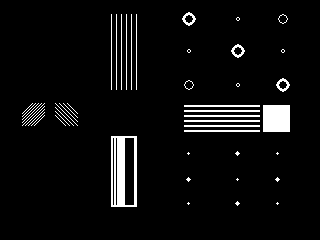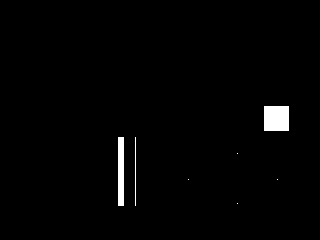|
|
Erosion Class |
Namespace: Accord.Imaging.Filters
Assembly: Accord.Imaging (in Accord.Imaging.dll) Version: 3.8.0
The Erosion type exposes the following members.
| Name | Description | |
|---|---|---|
| Erosion |
Initializes a new instance of the Erosion class.
| |
| Erosion(Int16) |
Initializes a new instance of the Erosion class.
|
| Name | Description | |
|---|---|---|
| FormatTranslations |
Format translations dictionary.
(Overrides BaseUsingCopyPartialFilterFormatTranslations.) |
| Name | Description | |
|---|---|---|
| Apply(Bitmap) |
Apply filter to an image.
(Inherited from BaseUsingCopyPartialFilter.) | |
| Apply(BitmapData) |
Apply filter to an image.
(Inherited from BaseUsingCopyPartialFilter.) | |
| Apply(UnmanagedImage) |
Apply filter to an image in unmanaged memory.
(Inherited from BaseUsingCopyPartialFilter.) | |
| Apply(UnmanagedImage, UnmanagedImage) |
Apply filter to an image in unmanaged memory.
(Inherited from BaseUsingCopyPartialFilter.) | |
| ApplyInPlace(Bitmap) |
Apply filter to an image.
(Inherited from BaseUsingCopyPartialFilter.) | |
| ApplyInPlace(BitmapData) |
Apply filter to an image.
(Inherited from BaseUsingCopyPartialFilter.) | |
| ApplyInPlace(UnmanagedImage) |
Apply filter to an unmanaged image.
(Inherited from BaseUsingCopyPartialFilter.) | |
| ApplyInPlace(Bitmap, Rectangle) |
Apply filter to an image or its part.
(Inherited from BaseUsingCopyPartialFilter.) | |
| ApplyInPlace(BitmapData, Rectangle) |
Apply filter to an image or its part.
(Inherited from BaseUsingCopyPartialFilter.) | |
| ApplyInPlace(UnmanagedImage, Rectangle) |
Apply filter to an unmanaged image or its part.
(Inherited from BaseUsingCopyPartialFilter.) | |
| Equals | Determines whether the specified object is equal to the current object. (Inherited from Object.) | |
| Finalize | Allows an object to try to free resources and perform other cleanup operations before it is reclaimed by garbage collection. (Inherited from Object.) | |
| GetHashCode | Serves as the default hash function. (Inherited from Object.) | |
| GetType | Gets the Type of the current instance. (Inherited from Object.) | |
| MemberwiseClone | Creates a shallow copy of the current Object. (Inherited from Object.) | |
| ProcessFilter |
Process the filter on the specified image.
(Overrides BaseUsingCopyPartialFilterProcessFilter(UnmanagedImage, UnmanagedImage, Rectangle).) | |
| ToString | Returns a string that represents the current object. (Inherited from Object.) |
| Name | Description | |
|---|---|---|
| HasMethod |
Checks whether an object implements a method with the given name.
(Defined by ExtensionMethods.) | |
| IsEqual |
Compares two objects for equality, performing an elementwise
comparison if the elements are vectors or matrices.
(Defined by Matrix.) | |
| To(Type) | Overloaded.
Converts an object into another type, irrespective of whether
the conversion can be done at compile time or not. This can be
used to convert generic types to numeric types during runtime.
(Defined by ExtensionMethods.) | |
| ToT | Overloaded.
Converts an object into another type, irrespective of whether
the conversion can be done at compile time or not. This can be
used to convert generic types to numeric types during runtime.
(Defined by ExtensionMethods.) |
The filter assigns minimum value of surrounding pixels to each pixel of the result image. Surrounding pixels, which should be processed, are specified by structuring element: 1 - to process the neighbor, -1 - to skip it.
The filter especially useful for binary image processing, where it removes pixels, which are not surrounded by specified amount of neighbors. It gives ability to remove noisy pixels (stand-alone pixels) or shrink objects.
For processing image with 3x3 structuring element, there are different optimizations available, like Erosion3x3 and BinaryErosion3x3.
The filter accepts 8 and 16 bpp grayscale images and 24 and 48 bpp color images for processing.
Sample usage:
// create filter Erosion filter = new Erosion( ); // apply the filter filter.Apply( image );
Initial image:

Result image:
